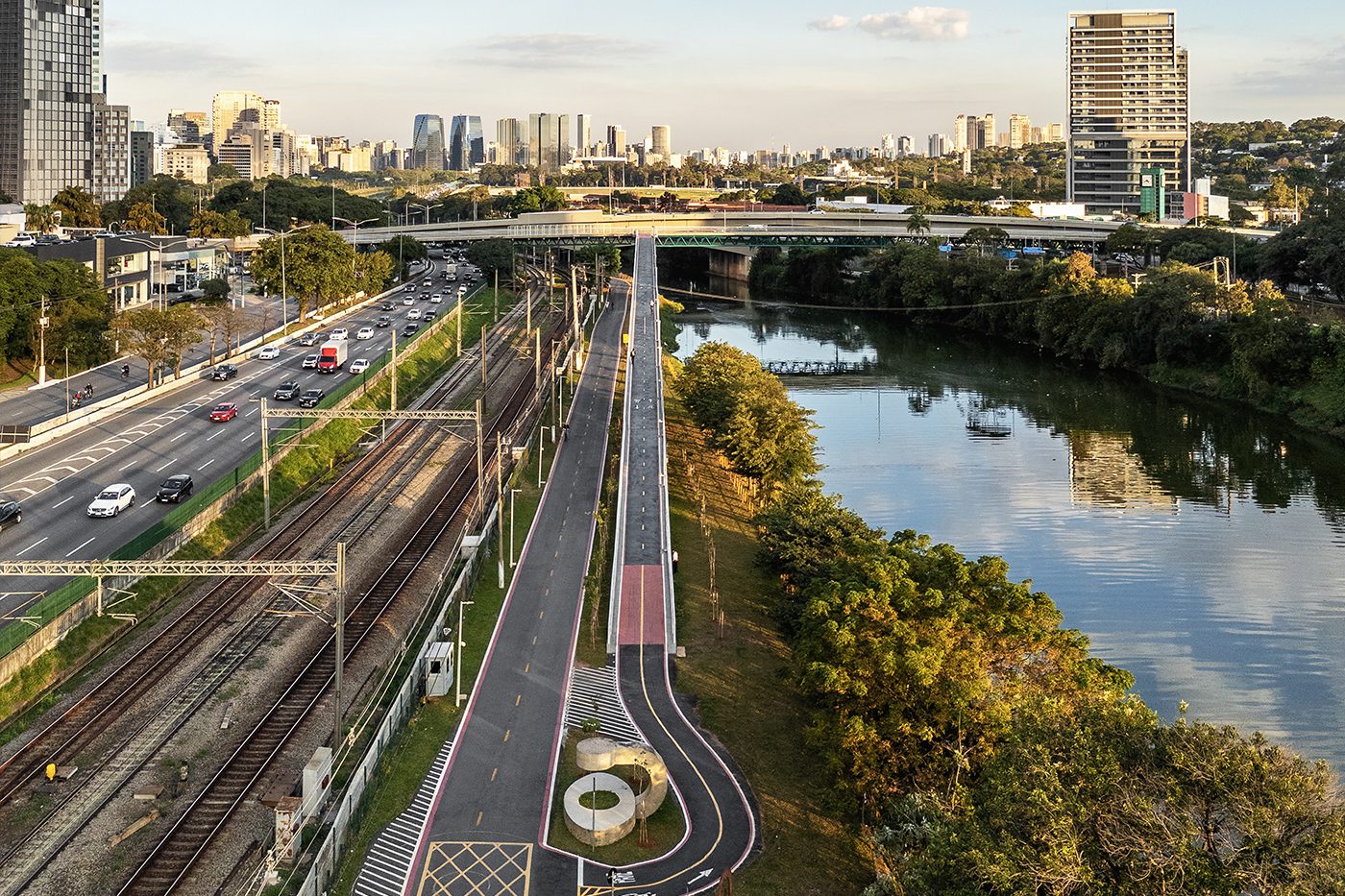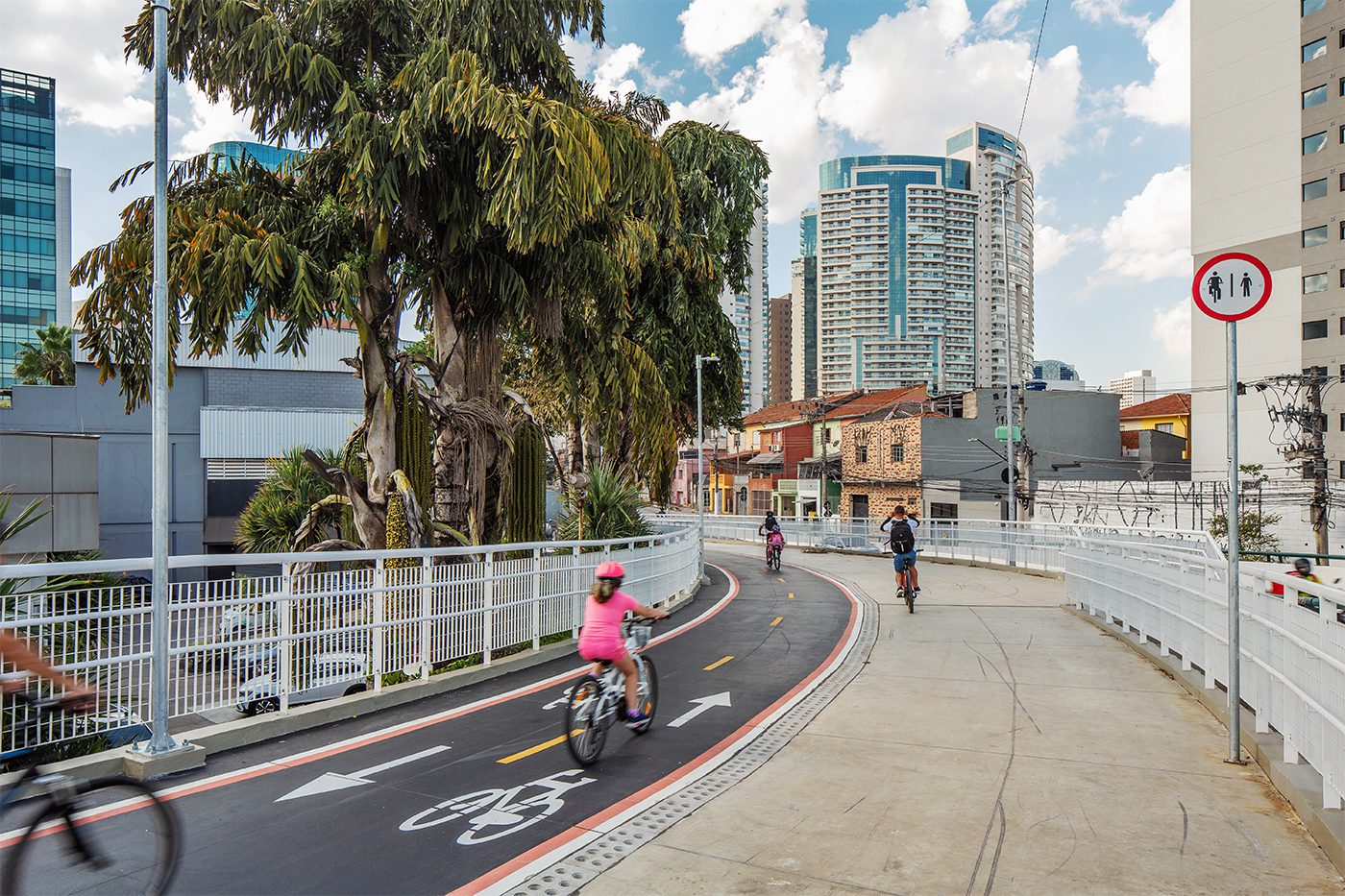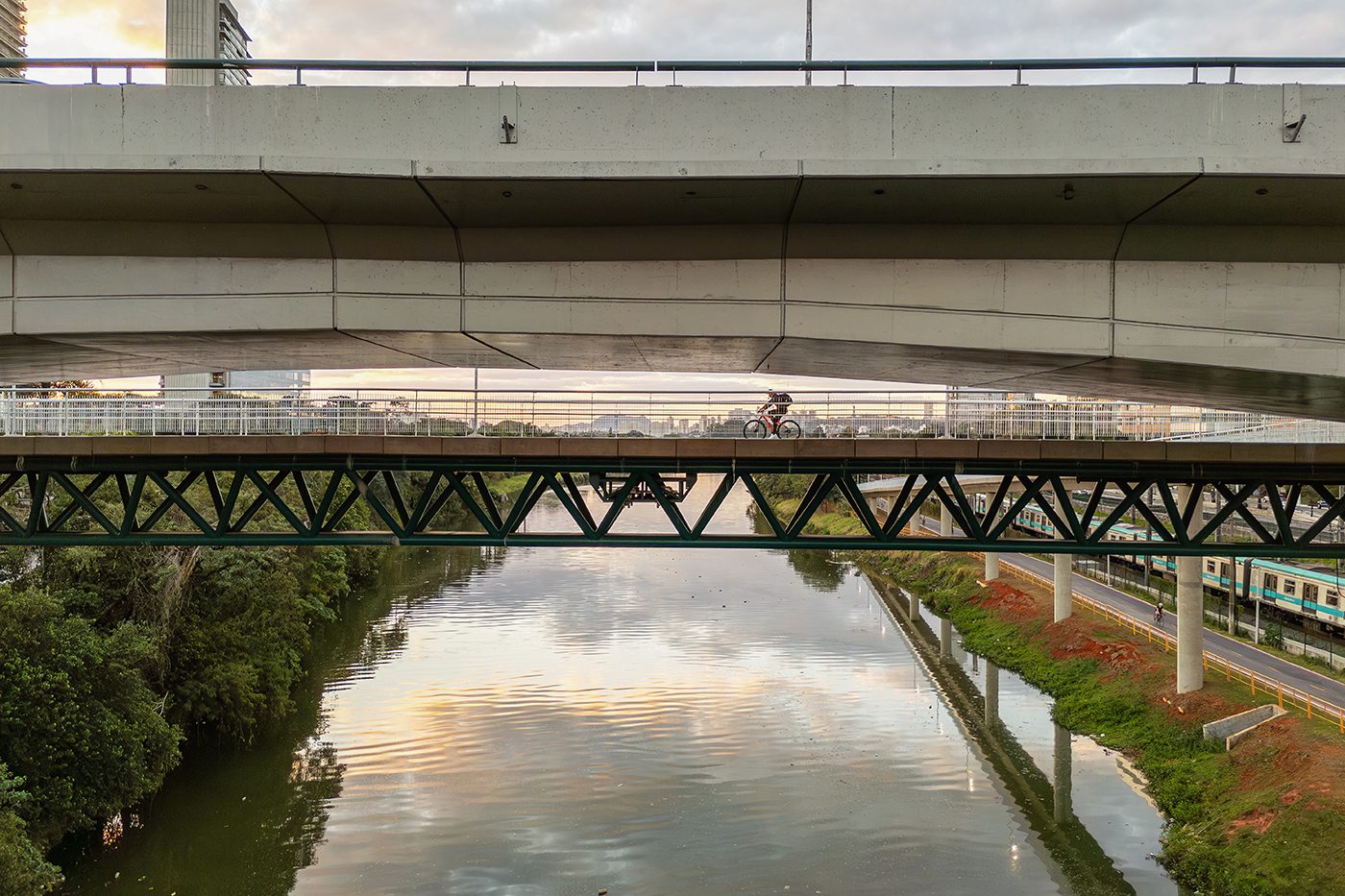Project implementation: Brazil
Project development: Brazil
(RE)PROGRAM AND (RE)CONSTRUCT THE CROSSINGS OVER THE RIVERS OF SÃO PAULO
The Erika Sallum Footbridge project began with a proposal submitted in 2014, responding to a call from the São Paulo City Hall within the Arco Tietê Urban Perimeter. We chose to study urban crossings over rivers and identified striking social, economic, and cultural inequalities between the riverbanks. This situation is exacerbated by the scarcity of well-located bridges that prioritize private vehicles and neglect pedestrians and cyclists. At the time, of the 62 crossings over the Pinheiros and Tietê rivers, none were dedicated to active mobility—a worrying situation in a city where a third of the population commutes on foot.
Our proposal was selected, creating São Paulo's first cycle walkway, connecting the dense and popular neighborhoods of Butantã and Pinheiros. From the outset, we sought to ensure that the bridge's headlands would act as activating elements of public space, connecting public transportation, sidewalks, and cycle paths. We prioritized safe and comfortable access that would encourage daily use of the crossing. The walkway was designed as a wide, pleasant, and contemplative walkway, offering privileged views of the city, the mountains, and Jaraguá Peak.
The structure features a central access point that connects directly to the Marginal Pinheiros bike path, extending its use on weekends and for leisure activities. Because it's located in a high-traffic area, the construction used prefabricated elements: a main metal truss and a concrete platform. The initial sections were cast in situ on the flowerbeds, while the sections over the river and avenues were divided into nine metal sections, hoisted overnight, and precisely positioned on concrete pillars.
The rapid appropriation of the footbridge by the population demonstrates the transformative potential of well-planned urban infrastructure. More than just a crossing, it has become a symbol of the importance of public investment in active mobility and the improvement of urban spaces, promoting more sustainable modes of transportation and strengthening collective life in cities.




